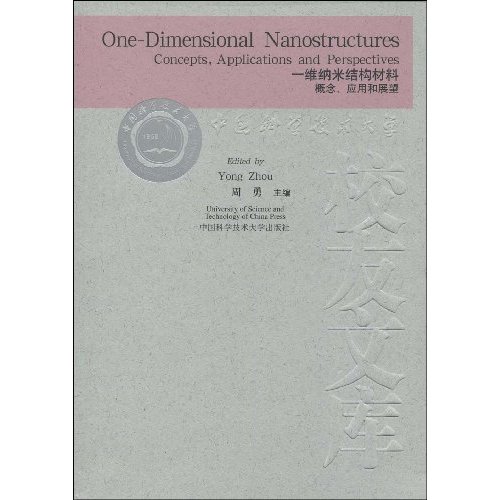
一维纳米结构材料-概念.应用和展望

- ISBN:9787312022012
- 装帧:暂无
- 册数:暂无
- 重量:暂无
- 开本:16开
- 页数:272
- 出版时间:2009-07-01
- 条形码:9787312022012 ; 978-7-312-02201-2
本书特色
《一维纳米结构材料概念、应用和展望(英文版)》:当代科学技术基础理论与前沿问题研究丛书:中国科学技术大学校友文库“十一五”国家重点图书
内容简介
简介 纳米材料是20世纪80年代中期一个迅速发展的材料科学领域,受到人们广泛的关注。本书选择性的汇集了国内外中国科技大学校友在一维纳米材料的*新科技研究成果。书中介绍了一维纳米材料包括纳米线、纳米管和纳米带等当今研究的趋势、相关技术与未来发展方向,是化学、物理和材料等学科的基础理论研究与应用技术的前沿集成反映。 本书适合于高等学校、科研院所以及相关企业从事纳米材料研发的科研人员和管理工作者,同时也可作为相关专业的师生和爱好者学习参考用书。
目录
节选
纳米材料是20世纪80年代中期一个迅速发展的材料科学领域,受到人们广泛的关注。《一维纳米结构材料概念、应用和展望(英文版)》选择性的汇集了国内外中国科技大学校友在一维纳米材料的*新科技研究成果。书中介绍了一维纳米材料包括纳米线、纳米管和纳米带等当今研究的趋势、相关技术与未来发展方向,是化学、物理和材料等学科的基础理论研究与应用技术的前沿集成反映。《一维纳米结构材料概念、应用和展望(英文版)》适合于高等学校、科研院所以及相关企业从事纳米材料研发的科研人员和管理工作者,同时也可作为相关专业的师生和爱好者学习参考用书。
相关资料
插图:When a NW was deflected, the outer surface was stretched and the innersurface was compress. According to the piezoelectric effect, an electric fieldEz was generated along the Z axis of the NW. This induced a voltage dropVs- to Vs across the top end of the NW with first order approximation.This potential drop was created by the relative displacement of Zn2 + cationsand 02- anions, so it cannot be freely moved or neutralized without anyinjected carriers. Thus this potential is persisted in the deflection process ofthe NWs. The AFM tip is a Si tip coating with Pt layer. Due to the large workfunction difference of Pt and ZnO, they form a Schottky contact between thetip and the NW. When the AFM tip was in contact with the front end(stretched side) of the NW, which has a positive bias, the metal andsemiconductor contact is negative biased. The current flow was prohibited bythe Schottky contact. When the tip moved the compressed side of this NW,the metal and semiconductor contact is positive biased. This produced a suddenincrease in the conducting current. This current is formed by the voltage drop acrossthe contacts. The free electrons flow from the loop into the NW and neutralizedionic charges formed by the piezoelectric effect. Thus the VL starts to drop to zero.This piezoelectric energy formation and releasing principle is shown in Figure 2.16which is the basic working principle of nanogenerator and nanopiezoelectronics. In this section, a new field in nanotechnology, nanopiezotronics isintroduced. Working principle of these devices relies on the unique coupling ofZnO's piezoelectric and semiconducting properties.In the demonstratedwork, piezotronics devices based on ZnO NW exhibit potentials to convertbiological mechanical energy, acoustic/ultrasonic vibration energy, and biofluidhydraulic energy into electricity. This is a new path way for energy converting andcollecting, which is a crucial progres
-

数字电子技术
¥36.8¥43.8 -

工业与民用供配电设计手册-(上.下册)-第四版
¥260.0¥388.0 -

进步简史
¥11.7¥30.0 -

突发环境事件应急监测案例研究
¥94.7¥128.0 -

自然灾害情景态势推演规则与风险评估方法
¥49.1¥78.0 -

生命周期评价方法与实践
¥132.7¥168.0 -

矿山安全工程
¥51.3¥59.0 -

变电二次安装工实用技术
¥88.3¥128.0 -

铅铋合金冷却反应堆技术
¥125.6¥159.0 -

作战无人机系统和全球作战无人机
¥141.4¥186.0 -

核动力设备静密封技术
¥211.7¥268.0 -

东北环境史专题研究
¥62.4¥80.0 -

快速认识世界汽车标志与车名
¥32.4¥49.9 -

基于机器学习理论的通信辐射源个体识别
¥52.3¥78.0 -

智能汽车电子与软件:开发方法、系统集成、流程体系与项目管理
¥70.9¥109.0 -

《二手纯电动乘用车鉴定评估技术规范》实施与细则(修订版)
¥36.0¥45.0 -

储能产业政策与典型项目案例解析
¥77.4¥98.0 -

智能金属矿山
¥42.6¥49.0 -

华夏衣裳 汉服制作实例教程
¥104.3¥149.0 -

机械加工基础入门 第3版
¥38.4¥59.0












